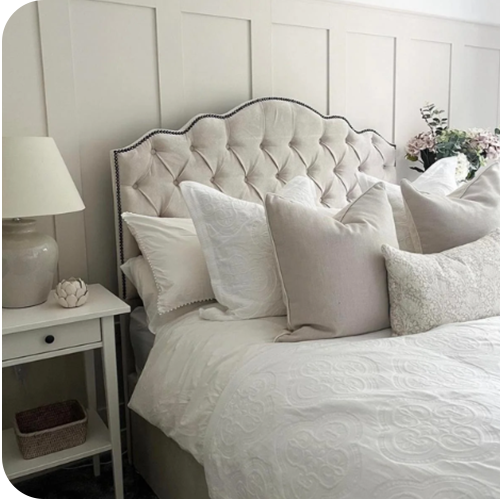Why Furniture Placement Matters
The arrangement of furniture holds immense sway over a room’s ambiance and utility, often underestimated. Thoughtful placement orchestrates flow, enhancing visual appeal and functionality. Strategic positioning creates harmony, allowing natural light to dance and pathways to breathe, accentuating spaciousness.
It curates an inviting atmosphere, fostering comfort and ease of movement. Well-placed furniture fosters conversation or solitude, dictating the room’s purpose.
Each piece becomes a note in a symphony, composing an exceptional space that transcends mere functionality, embodying a narrative of style and comfort. Understanding this power transforms spaces, turning the ordinary into the extraordinary, and elevating every moment spent within.
Table of contents
Importance of Furniture Placement

The strategic arrangement of furniture impacts more than just aesthetics. It plays a pivotal role in influencing emotions, functionality, and energy flow within a space.
| Points | Explanation |
| Functionality | Enhances usability, ease of movement, and access, optimizing space for intended practical use. |
| Aesthetics | Improves visual appeal, fostering a cohesive and pleasing atmosphere within the room. |
| Emotional Impact | Influences mood and comfort by creating spaces that feel welcoming, cozy, or open. |
| Traffic Flow | Prevents congestion, enabling smooth movement and flow throughout the room. |
| Space Perception | Alters perception, creating an illusion of spaciousness or coziness based on arrangement. |
| Energy Flow | Affects the circulation of energy or chi, influencing the overall ambiance and atmosphere. |
Psychological Impact

The way furniture is placed affects mood and ambiance. Thoughtful arrangement can evoke feelings of comfort, coziness, or spaciousness, directly impacting one’s mental state.
Functionality
Moreover, furniture placement determines how efficiently a space is utilized. Properly positioned furniture enhances flow, making it easier to navigate and use the area effectively.
Aesthetic Appeal
In addition, it contributes to the aesthetic appeal by establishing harmony and balance. Well-positioned furniture creates visual interest and a pleasing atmosphere.
Practical Tips

However, finding the right placement can be challenging. Considerations such as room size, traffic flow, and focal points are crucial for effective furniture arrangement.
Room Size:
- Measure Twice: Take precise measurements of the room dimensions to understand available space accurately.
- Scale Matters: Consider the scale of your furniture in relation to the room size. Bulky furniture can overwhelm a small room.
- Functionality Balance: Ensure there’s enough space for movement and that furniture doesn’t obstruct doors or pathways.
Traffic Flow:
- Clear Pathways: Arrange furniture to create clear pathways for easy movement throughout the room.
- Mind the Doors: Avoid blocking doors or entries with furniture placement.
- Traffic Patterns: Think about the natural flow of movement in the room and arrange furniture accordingly.
Focal Points:
- Identify the Focus: Determine the room’s focal point (fireplace, TV, large window) and orient furniture around it.
- Balance Attention: Ensure furniture placement complements the focal point without overshadowing it.
- Visual Harmony: Create a cohesive look by arranging furniture to draw attention to the room’s focal point.
Room-specific Considerations

Different rooms demand specific attention. The living room, bedroom, and dining room each require unique approaches to maximize comfort and functionality. Moreover, furniture placement holds significance from a Feng Shui perspective. It influences the energy flow within a space, impacting the overall vibe and atmosphere.
Conclusion
Strategic furniture arrangement holds immense importance. It extends beyond visual appeal, impacting how a space operates, influences emotions, and guides the flow of energy. Thoughtful placement enhances usability, facilitating ease of movement and practicality. It sets the ambiance, fostering positive moods or hindering them if poorly arranged. The spatial arrangement of furniture can dictate the dynamics of interaction and comfort within a room, making it a pivotal aspect of interior design that profoundly shapes the environment’s essence and functionality.
Readmore:
How to Care for Your Dining Table and Chairs
Future of Mattresses: New Innovations and Technologies
How to Make Your Own Footstool
How to Arrange Your Furniture for a Functional and Inviting Space
FAQs
Color plays a role in furniture placement. Lighter shades tend to open up spaces, while darker tones can create a cozier feel.
Absolutely! Well-placed furniture in a workspace can enhance productivity by creating an organized and motivating environment.
Symmetry can bring a sense of balance, but asymmetrical arrangements can also be visually appealing. It often depends on the room’s style and personal preference.
While there are guidelines, flexibility is key. Opt for multipurpose furniture and experiment with various layouts to maximize space in smaller rooms.



